Scorpions, centipedes, and poisonous spiders also were not unfrequently brought into the ship with the wood, and occasionally found their way into our beds; but in every instance we were fortunate enough to discover and destroy them before they did any harm.Naval officers on this coast report that, when scorpions and centipedes remain a few weeks after being taken on board in a similar manner, their poison loses nearly all its virulence; but this we did not verify.Snakes sometimes came in with the wood, but oftener floated down the river to us, climbing on board with ease by the chain-cable, and some poisonous ones were caught in the cabin.Agreen snake lived with us several weeks, concealing himself behind the casing of the deckhouse in the daytime.To be aroused in the dark by five feet of cold green snake gliding over one's face is rather unpleasant, however rapid the movement may be.Myriads of two varieties of cockroaches infested the vessel; they not only ate round the roots of our nails, but even devoured and defiled our food, flannels, and boots.Vain were all our efforts to extirpate these destructive pests; if you kill one, say the sailors, a hundred come down to his funeral!In the work of Commodore Owen it is stated that cockroaches, pounded into a paste, form a powerful carminative; this has not been confirmed, but when monkeys are fed on them they are sure to become lean.
On coming to Senna, we found that the Zulus had arrived in force for their annual tribute.These men are under good discipline, and never steal from the people.The tax is claimed on the ground of conquest, the Zulus having formerly completely overcome the Senna people, and chased them on to the islands in the Zambesi.Fifty-four of the Portuguese were slain on the occasion, and, notwithstanding the mud fort, the village has never recovered its former power.Fever was now very prevalent, and most of the Portuguese were down with it.
For a good view of the adjacent scenery, the hill, Baramuana, behind the village, was ascended.A caution was given about the probability of an attack of fever from a plant that grows near the summit.Dr.
Kirk discovered it to be the Paedevia foetida, which, when smelt, actually does give headache and fever.It has a nasty fetor, as its name indicates.This is one instance in which fever and a foul smell coincide.In a number of instances offensive effluvia and fever seems to have no connection.Owing to the abundant rains, the crops in the Senna district were plentiful; this was fortunate, after the partial failure of the past two years.It was the 25th of April, 1860, before we reached Tette; here also the crops were luxuriant, and the people said that they had not had such abundance since 1856, the year when Dr. Livingstone came down the river.It is astonishing to any one who has seen the works for irrigation in other countries, as at the Cape and in Egypt, that no attempt has ever been made to lead out the water either of the Zambesi or any of its tributaries;
No machinery has ever been used to raise it even from the stream, but droughts and starvations are endured, as if they were inevitable dispensations of Providence, incapable of being mitigated.
Feeling in honour bound to return with those who had been the faithful companions of Dr. Livingstone, in 1856, and to whose guardianship and services was due the accomplishment of a journey which all the Portuguese at Tette had previously pronounced impossible, the requisite steps were taken to convey them to their homes.
We laid the ship alongside of the island Kanyimbe, opposite Tette;
And, before starting for the country of the Makololo, obtained a small plot of land, to form a garden for the two English sailors who were to remain in charge during our absence.We furnished them with a supply of seeds, and they set to work with such zeal, that they certainly merited success.Their first attempt at African horticulture met with failure from a most unexpected source; every seed was dug up and the inside of it eaten by mice."Yes," said an old native, next morning, on seeing the husks, "that is what happens this month; for it is the mouse month, and the seed should have been sown last mouth, when I sowed mine."The sailors, however, sowed more next day; and, being determined to outwit the mice, they this time covered the beds over with grass.The onions, with other seeds of plants cultivated by the Portuguese, are usually planted in the beginning of April, in order to have the advantage of the cold season; the wheat a little later, for the same reason.If sown at the beginning of the rainy season in November, it runs, as before remarked, entirely to straw; but as the rains are nearly over in May, advantage is taken of low-lying patches, which have been flooded by the river.A hole is made in the mud with a hoe, a few seeds dropped in, and the earth shoved back with the foot.If not favoured with certain misty showers, which, lower down the river, are simply fogs, water is borne from the river to the roots of the wheat in earthern pots; and in about four months the crop is ready for the sickle.The wheat of Tette is exported, as the best grown in the country; but a hollow spot at Maruru, close by Mazaro, yielded very good crops, though just at the level of the sea, as a few inches rise of tide shows.















